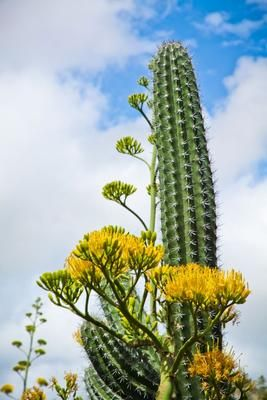The Agave Pita (Agave vivipara), known locally as “Cuco di Indjan” or “Pita,” is one of four Agave species found in Aruba, as identified by Arikok National Park. This drought-resistant plant thrives in Aruba’s arid landscape, often mistaken for a cactus due to its spiky appearance. However, it is actually a close relative of the asparagus family.
The Agave Pita in Aruba has adapted to desert conditions by:
The Agave Pita is a true survivor, with its impressive water retention, unique growth cycle, and towering bloom. Whether found in Arikok National Park or growing wild in the desert, this plant remains an essential part of Aruba’s natural beauty.
